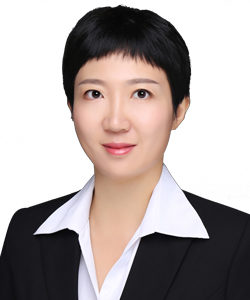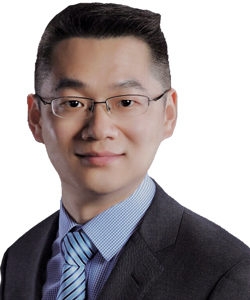In March 2020, Bull Group announced that the Supreme Court had accepted the appeal from Jiangsu General Protecht for five cases involving the utility model patent, “power socket safety protection device”. Does this acceptance mean that the current system of “dismiss first, sue separately” may change? This attracted the attention of the authors.

Partner
Yuanhe Partners
The Bull Group series of cases began in December 2018. General Protecht filed lawsuits on the ground that Bull Group infringed upon the patent at issue, and another invention patent, “supporting and sliding safety door”, claiming a record nearly RMB1 billion (US$140 million). With the invalidation of two patents of General Protecht, the court of first instance dismissed the five lawsuits related to the patent at issue, according to the current system of “dismiss first, sue separately”, and General Protecht also withdrew five lawsuits related to another invention patent.
The trials of patent infringement cases in China adopt the litigation structure of civil and administrative separation. The patentee sues the defendant for infringing upon his or her patent in the court, and the court hears the patent infringement case. The defendant often immediately files a separate request for invalidation of the patent with the Re-examination and Invalidation Department of the Patent Office of the State Intellectual Property Office, and the department hears the patent invalidation case. This is different from the practice in some countries, where the court hearing patent infringement cases also examines the validity of patents.

Partner
Yuanhe Partners
Under the litigation structure of civil and administrative separation, before the emergence of the system of “dismiss first, sue separately”, even if the patent is declared invalid by the Patent Re-examination and Invalidation Department, the court hearing patent infringement cases tends to wait for the final result of the patent confirmation procedure, rather than dismiss the civil litigation immediately, in practice.
Due to the complexity of patent confirmation procedures, some cases may form a circular lawsuit, or procedural idling, between the Patent Re-examination and Invalidation Department, the court of first instance and the court of second instance, which will drag down the trial of patent infringement cases associated with it, and is not conducive to the substantive settlement of disputes.
In order to alleviate the influence of the long trial period on patent infringement litigation as much as possible, and fully consider the fact that the proportion of administrative litigation for patent confirmation to change the decision of the Patent Re-examination and Invalidation Department is relatively low, the Supreme Court has designed the system of “dismiss first, sue separately” in article 2 of the Interpretation on Several Issues Concerning the Application of Law in Hearing Disputes over Patent Infringement (II).
After the department makes the decision to declare the patent right invalid, the court hearing the patent infringement case can dismiss the case without waiting for the final result of the administrative litigation of the patent, and can provide the patentee judicial relief through a separate lawsuit.
In recent years, the Supreme Court has reformed the current patent dispute hearing system, and achieved many results. The most important reform is that, since 1 January 2019, the Supreme Court has carried out a pioneering structural change in jurisdiction, setting up a special intellectual property court to hear the second instance cases of patent disputes, including patent invalidation appeals and patent infringement appeals, except for design patents, so as to further unify the trial standards.
In December 2019, on the first day of the “collective decision announcement week”, during which the judgments of benchmark cases are publicly announced, the Supreme Court simultaneously adjudicated related cases of patent infringement and patent confirmation, involving patent disputes between Xiamen Power Electronic Technology and LG Electronics (Tianjin) Appliance. This was the first attempt of the Supreme Court to simultaneously hear civil and administrative cases involving the same patent.
It avoids the situation that the parties make use of two procedures to get different interpretations of the same patent, due to different civil and administrative courts hearing the patent, and also embodies the value of the Supreme Court’s centralized and unified jurisdiction over the second instance cases of patent invalidation and patent infringement.
In view of the current system of “dismiss first, sue separately”, from the patentee’s point of view, the authors believe that, first, article 2 of judicial interpretation II of the Patent Law provides that the people’s court hearing cases of patent infringement disputes “can”, rather than “must”, dismiss the case. The court should consider the situation of the case comprehensively and in combination with the possible impact of dismissal on both parties, and make a comprehensive judgment instead of concluding the cases by dismissal.
Second, the patentee has invested a lot of manpower, material and financial resources into the process of safeguarding rights, especially in the case of micro, small and medium-sized enterprises suing large enterprises for patent infringement, in which case the two parties are at great disparity in strength. If the lawsuit is dismissed before the patent confirmation procedure comes to a final conclusion, it will inevitably affect the patentee’s confidence in safeguarding rights, and may also cause irreparable economic losses, which is also a waste of judicial resources.
Third, since the patent invalidation appeal cases and the patent infringement appeal cases, other than the design patents, are under the jurisdiction of the Supreme Court, which ensures that the patent infringement cases and the patent invalidation cases can finally be heard and decided from a unified perspective, it is debatable whether dismissal without exception is still the best way for the court of first instance to deal with cases.
The Supreme Court has accepted the appeal request of the patent at issue in the above-mentioned case. It remains to be seen whether that will play the explanatory and exemplary role of typical cases, and make further guidance on how to apply the system of “dismiss first, sue separately” through trials in the future.
Xiang Li and Lian Chenghe are partners at Yuanhe Partners

Yuanhe Partners
58F, Fortune Financial Center (FFC)
5 Dongsanhuan Zhonglu, Chaoyang District
Beijing 100020, China
Tel: +86 10 5733 2388
Fax: +86 10 5733 2399
E-mail:
xiangli@yuanhepartners.com
lianchenghe@yuanhepartners.com
www.yuanhepartners.com





















